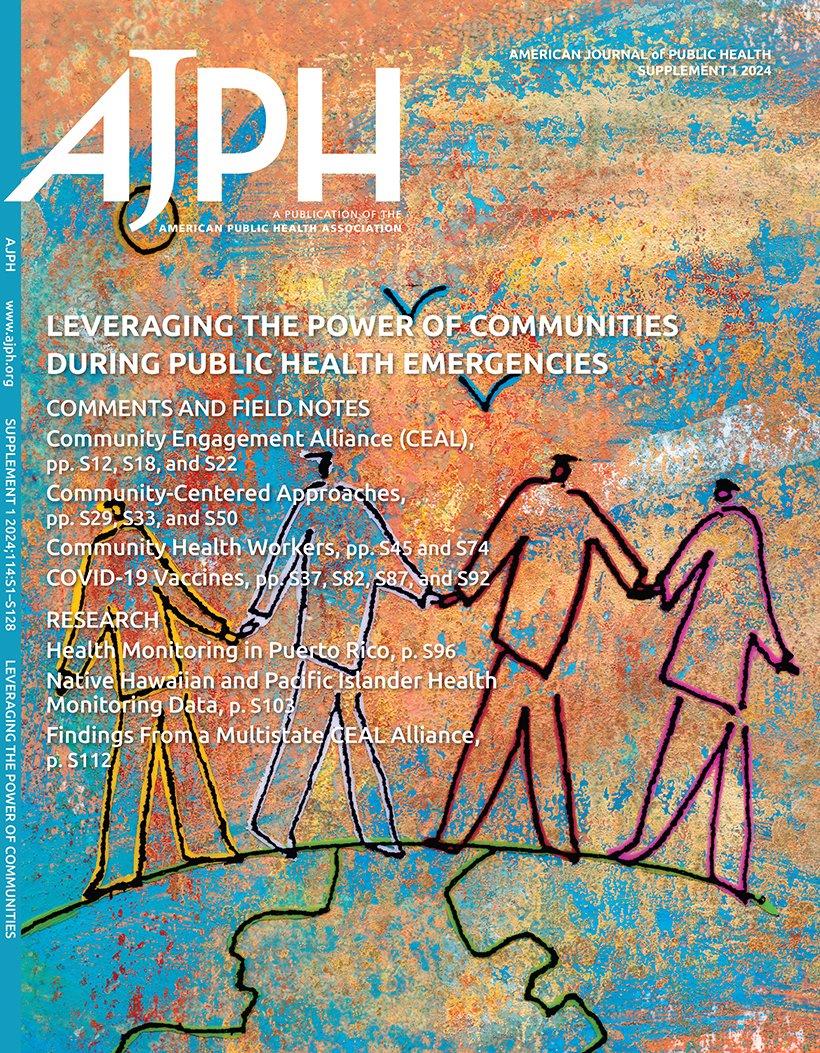Trends in Medical Encounters Involving Cannabis-Related Disorders Among US Medicare Beneficiaries, 2017-2022.
IF 9.6
1区 医学
Q1 PUBLIC, ENVIRONMENTAL & OCCUPATIONAL HEALTH
引用次数: 0
Abstract
Objectives. To characterize cannabis-related disorder medical encounter trends in the US Medicare population during 2017 to 2022. Methods. We conducted a descriptive study, which included 56 624 432 beneficiaries aged 65 years or older and 10 247 953 aged 18 to 64 years with disability. All were continuously enrolled in Medicare (Fee-for-Service or Advantage) for 183 or more days before the first day of the calendar year. We identified cannabis-related disorder encounters using International Classification of Diseases, 10th Revision, Clinical Modification diagnosis codes and computed annual encounter rates per 10 000 beneficiaries. We used the Mann-Kendall test to analyze trends over time. Results. Annual cannabis-related disorder encounter trends among beneficiaries aged 65 years or older ranged from 15.9 (95% confidence interval [CI] = 15.8, 16.0) to 39.3 (95% CI = 39.1, 39.5) per 10 000. Rates among beneficiaries aged 18 to 64 years with disability ranged from 274.8 (95% CI = 273.6, 276.0) to 373.7 (95% CI = 372.3, 375.2) per 10 000. Rates increased over time across both groups, with average annual increases of 4.3 (95% CI = 3.3, 5.3; P = .01) and 17.1 (95% CI = 11.0, 23.2; P = .02) per 10 000, respectively. Conclusions. Further work is needed to explore the impact of coexisting medical conditions on outcomes that result from cannabis-related disorders. (Am J Public Health. 2024;114(S8):S694-S697. https://doi.org/10.2105/AJPH.2024.307729).2017-2022 年美国医疗保险受益人中涉及大麻相关疾病的就诊趋势。
目标。描述 2017 年至 2022 年期间美国医疗保险人群中大麻相关疾病的就医趋势。方法。我们进行了一项描述性研究,其中包括 56 624 432 名 65 岁或以上的受益人和 10 247 953 名 18 至 64 岁的残疾人士。所有受益人在日历年第一天之前均已连续参加医疗保险(付费服务或优势服务)183 天或 183 天以上。我们使用《国际疾病分类》第 10 版临床修正诊断代码确定了大麻相关疾病的就诊情况,并计算了每 10,000 名受益人的年度就诊率。我们使用 Mann-Kendall 检验来分析随时间变化的趋势。结果。在 65 岁或以上的受益人中,大麻相关疾病的年发病率趋势为每 10,000 人中有 15.9 人(95% 置信区间 [CI] = 15.8, 16.0)至 39.3 人(95% 置信区间 = 39.1, 39.5)。18至64岁残疾受益人的发病率为每1万人274.8(95% CI = 273.6,276.0)至373.7(95% CI = 372.3,375.2)。随着时间的推移,这两个群体的发病率都有所上升,平均每年每 10,000 人中的发病率分别上升 4.3 (95% CI = 3.3, 5.3; P = .01) 和 17.1 (95% CI = 11.0, 23.2; P = .02)。结论。需要进一步开展工作,探讨并存的医疗条件对大麻相关疾病导致的结果的影响。(Am J Public Health.2024;114(S8):S694-S697. https://doi.org/10.2105/AJPH.2024.307729).
本文章由计算机程序翻译,如有差异,请以英文原文为准。
求助全文
约1分钟内获得全文
求助全文
来源期刊

American journal of public health
医学-公共卫生、环境卫生与职业卫生
CiteScore
9.50
自引率
3.90%
发文量
1109
审稿时长
2-4 weeks
期刊介绍:
The American Journal of Public Health (AJPH) is dedicated to publishing original work in research, research methods, and program evaluation within the field of public health. The journal's mission is to advance public health research, policy, practice, and education.
 求助内容:
求助内容: 应助结果提醒方式:
应助结果提醒方式:


